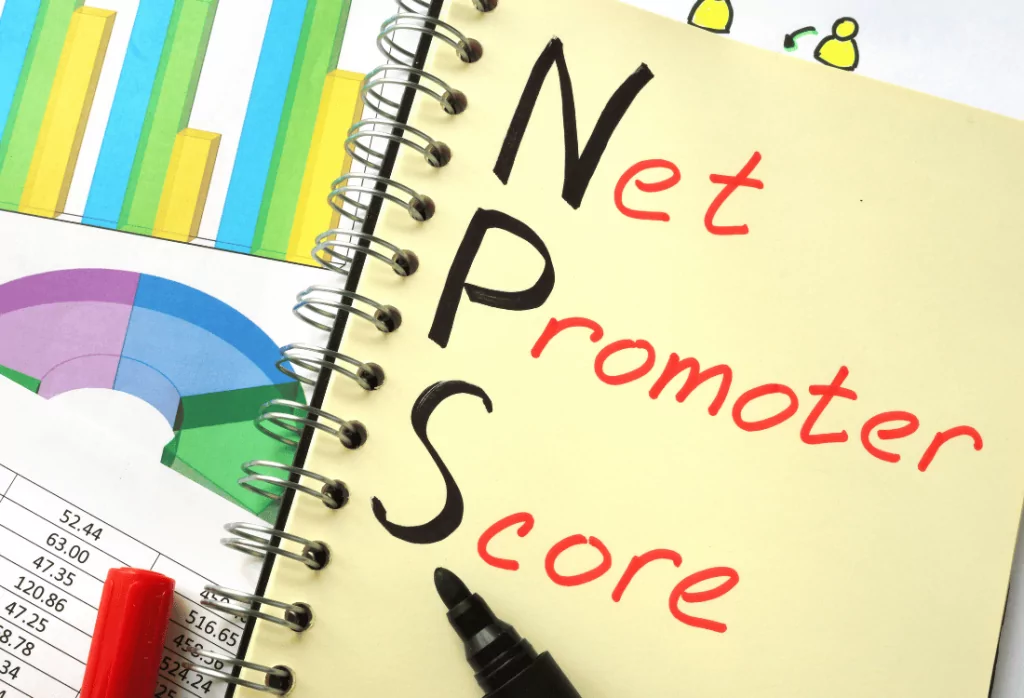
What is NPS?
NPS, or the ‘Net Promoter Score’ is a globally recognised metric that measures (most often) customer satisfaction or ‘advocacy’.
NPS is an output measure used by thousands of companies all over the world to provide a 'benchmarkable' measurement of how their customers feel about their products and services, and the way they are treated as customers.
It is also fast becoming the metric of choice for the ‘internal customer’ in business, or in other words employees. More and more businesses are recognising that the workforce is at least as important as the customer base to understand and keep happy.
So measuring levels of ‘engagement’ amongst the workforce using NPS and then improving it has the same many benefits as doing this with the customer base. Then linking the two to plot patterns is very powerful indeed.
What does the NPS scoring mean?
NPS scoring works by asking quantitative questions that allow the responder to give a scorable answer between 1 and 10. How the responder feels will be reflected in what score they give.
There is much research and psychology behind the way consumers think and respond, and of course people are not robots and so think independently, but the following principles are applied to the way responders score the questions.
If the responder gives a 9 or a 10, they are considered to be a ‘promoter’ of the supplier’s products, services, brand, people, etc. This means they will ‘advocate’ that company to their family, friends and network, at the very least reactively.
A 9 or a 10 for most of us is viewed as ‘great’.
If the responder gives a 7 or an 8, this makes them a ‘passive’. There’s probably nothing bad, but there is a blocker to them giving a 9 or a 10. A passive often articulates their experience as ‘good’, but not ‘great’.
Finally, if the responder gives a 6 or below, they are considered to be a ‘detractor’. This means they are the opposite of a promoter, and as such are likely to be ambivalent about the company at best, and at worst may proactively talk negatively about the company or the person in question.
If asked by their network they would almost certainly say words to the effect of……..“I wouldn’t use them, I had a bad experience” or whatever. This certainly doesn’t sound like good marketing, in fact quite the opposite.
How does the NPS calculation work?
The net promoter score is expressed as a percentage. The scale of possibilities runs from -100% to +100%. It is worked out as follows:

You’ll notice the passives are not part of the calculation, as they are effectively ‘ignored’ for the purpose of the calculation. This is because the psychology says they neither promote nor detract, so are essentially neutral.
So as a working example. If you survey 100 people and ask them how likely they are to recommend your company (and they all respond), and you get the following results:
- 75 promoters
- 13 passives
- 12 detractors
Your NPS score is worked out as: 75-12=63, then divided by the 100 asked is 63%.
So your NPS score is 63%.
…and how good is 63%? Well as a broad generalisation, this is pretty good! Of course, there are so many variables, and so many differences across different industries and cultures, but our research and experience tells us that 70% is what we call the ‘gateway to world class’.
So if you are getting 70% or more consistently from your customers or employees, then this is very good. You can google NPS yourself and see what published data there is and see for yourself the benchmarks in your particular industry.
But what does the net promoter score actually mean?
Think about the words, ‘net’, ‘promoter’….so thinking logically, if all 100 you asked are promoters, in theory you have 100 promoters out there running around recommending you/your company.
If you have just one detractor, then you only have 99 promoters left, so a ‘net 99’ who are out there promoting you/your business. That’s why it’s called the net promoter score, or NPS for short.
What can I ask my customers?
Technically the standard NPS question that companies use is “how likely are you to recommend XYZ company within your own network?” (or words to that effect).
This is the one that every company using NPS uses as a starter, and there is loads of published data on the internet to see how companies are doing on this measure.
You can also though apply the same 1 to 10 scale, and therefore the NPS formula to almost any question that is not a yes/no answer.
We wrote a book some years ago called ‘the Five Pillars of Advocacy’, and this sets out our own research on the five critical areas that companies must get right to have the very best chance of achieving ‘promoter status’ with their customers.
So why are promoters so critical for business?
Many ‘promoters’ will proactively advocate the company, so will purposefully look for opportunities to recommend the company to their own network. Many do this avidly, and in effect become that company’s free marketing department!
Why do promoters do this? It is unlikely to be for any personal financial gain, but there are other benefits to promoting companies within your own network. Everything from simply being ‘hard wired’ to help others get the same experience as they did, right through to their being reputational and recognition benefits to individuals particularly in business from connecting suppliers and potential customers.
Companies all over the world spend eye watering amounts of money promoting their brands, products and services using both traditional and digital means. Whilst some of this is effective, a lot of it isn’t.
If more companies looked to properly tap into and leverage their advocated or promoters, they would have more new business leads, which are probably already ‘very warm’, and have cost them little or nothing to create.
This sounds like utopia doesn’t it?
Similarly, many detractors don’t actually shout very loudly about their disgruntlement. Many remain quiet unless asked, and then one day leave the supplier for another one…and that supplier is left scratching its head saying, “why have they left, they seemed happy enough”?!
So how do I use the NPS in my company?
Put simply, our experience tells us that EVERY organisation should be asking its customers and its employees about their experience of the supplier or employer one way or another.
We believe this should be done annually, or after a major transaction, and these days web platforms are an easy and low cost way of doing it, but you can also use phone and face to face.
Companies that ‘get serious’ about feedback from customers and employees and make NPS a cultural KPI will benefit most. Just banging out a survey or two with little comms and context, and frankly playing at it, will deliver very little.
So if you want to know how to do it properly, and to build a culture of world class customer advocacy and employee engagement, then talk to us. We can help you measure it properly, to understand the insights you are getting, and to improve it, and in many cases transform it.
Image Source: Canva


